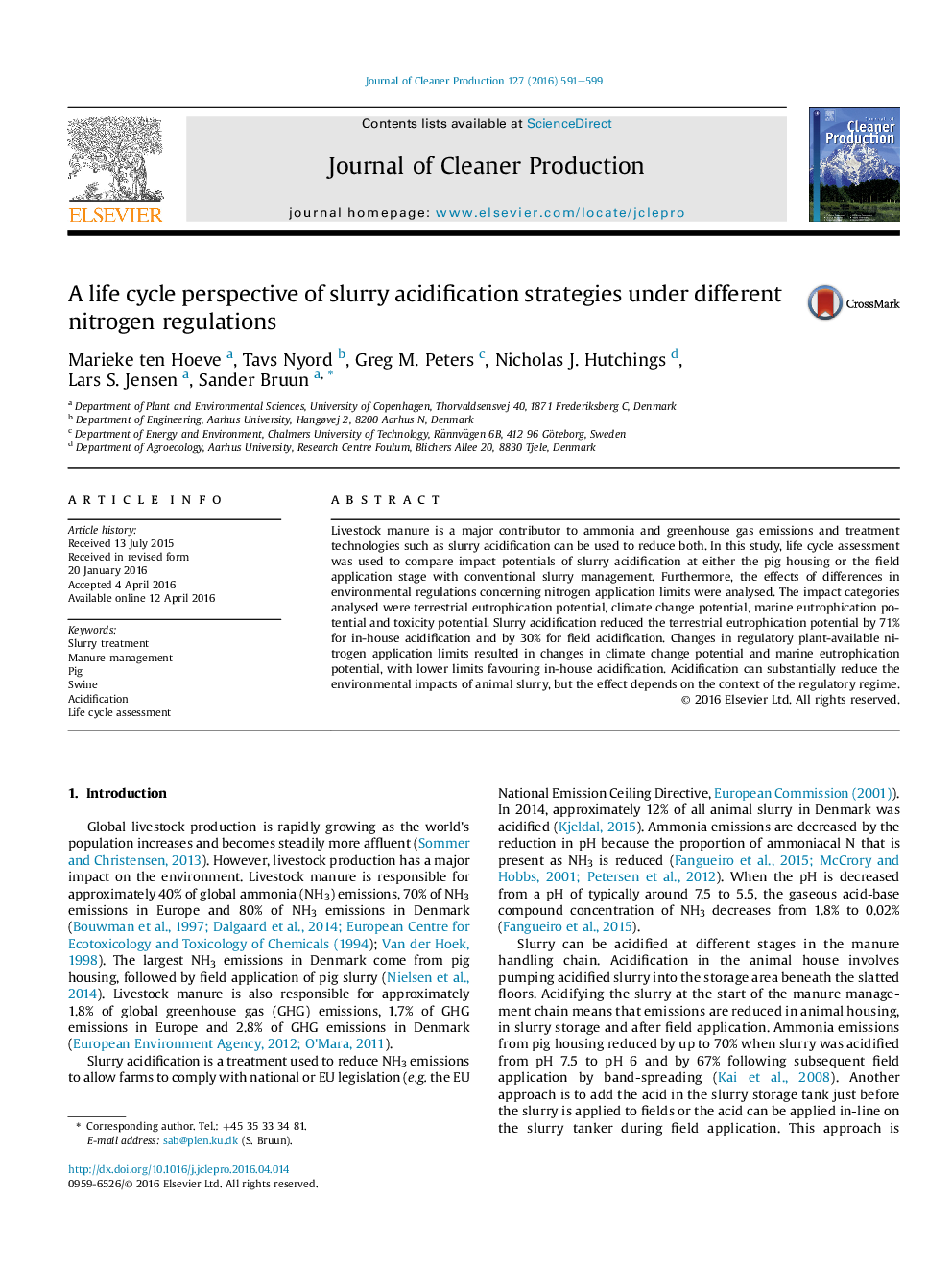| کد مقاله | کد نشریه | سال انتشار | مقاله انگلیسی | نسخه تمام متن |
|---|---|---|---|---|
| 1744118 | 1522122 | 2016 | 9 صفحه PDF | دانلود رایگان |
• In-house and field acidification of slurry can be used to reduce ammonia emissions.
• In-house acidification reduced the terrestrial eutrophication potential by 71%.
• Acidification leads to higher yields, an economic incentive for farmers to invest.
• Acidification can substantially reduce the environmental impacts of animal slurry.
• Nitrogen regulation affects the environmental performance of slurry acidification.
Livestock manure is a major contributor to ammonia and greenhouse gas emissions and treatment technologies such as slurry acidification can be used to reduce both. In this study, life cycle assessment was used to compare impact potentials of slurry acidification at either the pig housing or the field application stage with conventional slurry management. Furthermore, the effects of differences in environmental regulations concerning nitrogen application limits were analysed. The impact categories analysed were terrestrial eutrophication potential, climate change potential, marine eutrophication potential and toxicity potential. Slurry acidification reduced the terrestrial eutrophication potential by 71% for in-house acidification and by 30% for field acidification. Changes in regulatory plant-available nitrogen application limits resulted in changes in climate change potential and marine eutrophication potential, with lower limits favouring in-house acidification. Acidification can substantially reduce the environmental impacts of animal slurry, but the effect depends on the context of the regulatory regime.
Figure optionsDownload as PowerPoint slide
Journal: Journal of Cleaner Production - Volume 127, 20 July 2016, Pages 591–599
